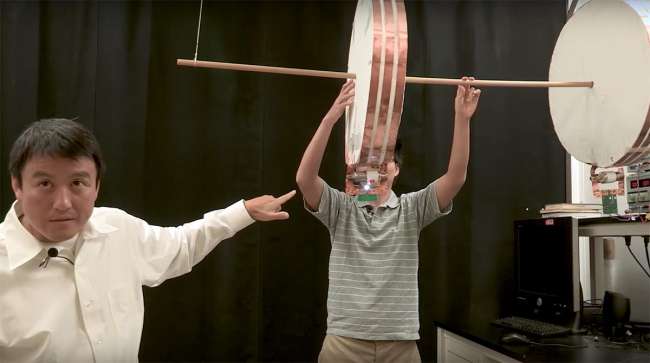Senior Reporter
Researchers Studying Wireless Transfer of Electricity to Vehicles

Scientists at Stanford University have succeeded in wirelessly transmitting electricity to a nearby moving object, the wide-ranging implications of which could affect the recharging of electric cars and trucks, robots and cellphones, university officials said.
The research was published first in the June 15 issue of Nature.
Some transportation experts envision an automated highway system where driverless electric vehicles are wirelessly charged by solar power or other renewable energy sources, the Stanford, Calif.-based university noted. The goal would be to reduce accidents and dramatically improve the flow of traffic while lowering greenhouse gas emissions, university officials said.
“In theory, one could drive for an unlimited amount of time without having to stop to recharge,” Shanhui Fan, a professor of electrical engineering and senior author of the study, said in a statement. “The hope is that you’ll be able to charge your electric car while you’re driving down the highway. A coil in the bottom of the vehicle could receive electricity from a series of coils connected to an electric current embedded in the road.”
Currently, however, the power levels being tested would not be enough to support an electric Class 8 truck, Fan told Transport Topics. “At present, the experimental demonstration is at a power level that is far lower — several orders of magnitude lower — compared with what is needed to charge a truck,” he said. “The principle we demonstrate should be scalable to higher power, but we have not done that yet.” He noted, however, that the speed of a Class 8 truck traveling a highway would not be an issue.
The researchers at Stanford built on existing technology developed in 2007 at MIT for transmitting electricity wirelessly over a distance of a few feet to a stationary object, the university said.
In the new work, the team transmitted electricity wirelessly to a moving LED lightbulb, it said. That demonstration involved only a 1-milliwatt charge, whereas electric cars often require tens of kilowatts to operate. The team is now working on greatly increasing the amount of electricity that can be transferred and tweaking the system to extend the transfer distance and improve efficiency, according to Stanford.
The research also may “untether robotics in manufacturing, which also are on the move,” Fan said. “We still need to significantly increase the amount of electricity being transferred to charge electric cars, but we may not need to push the distance too much more.”



